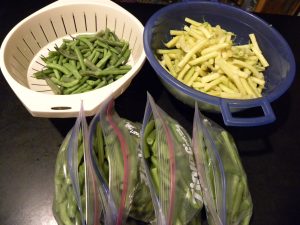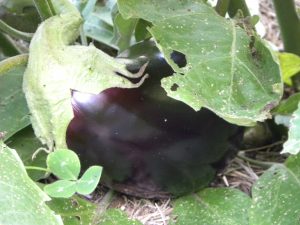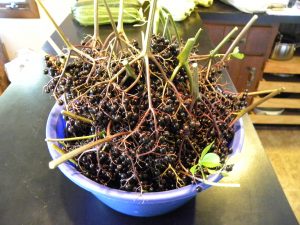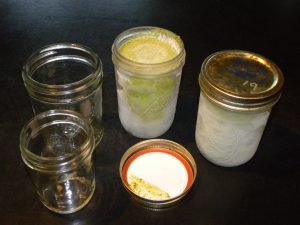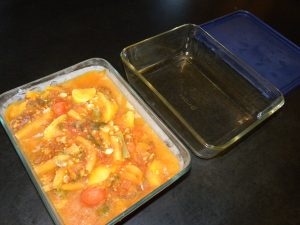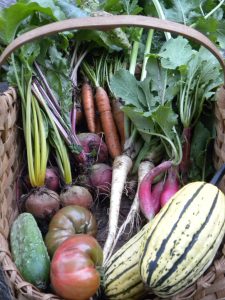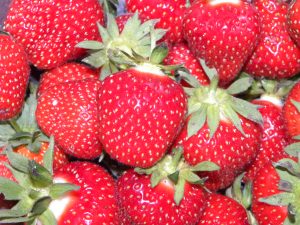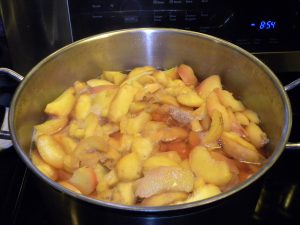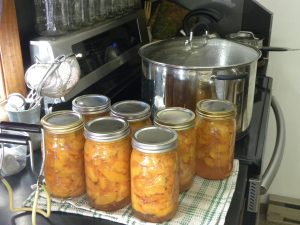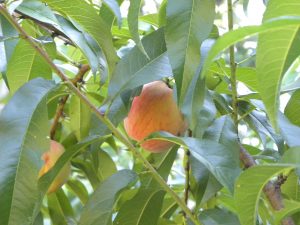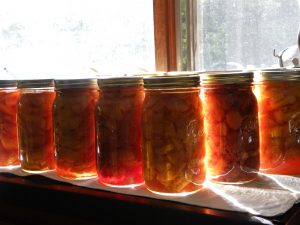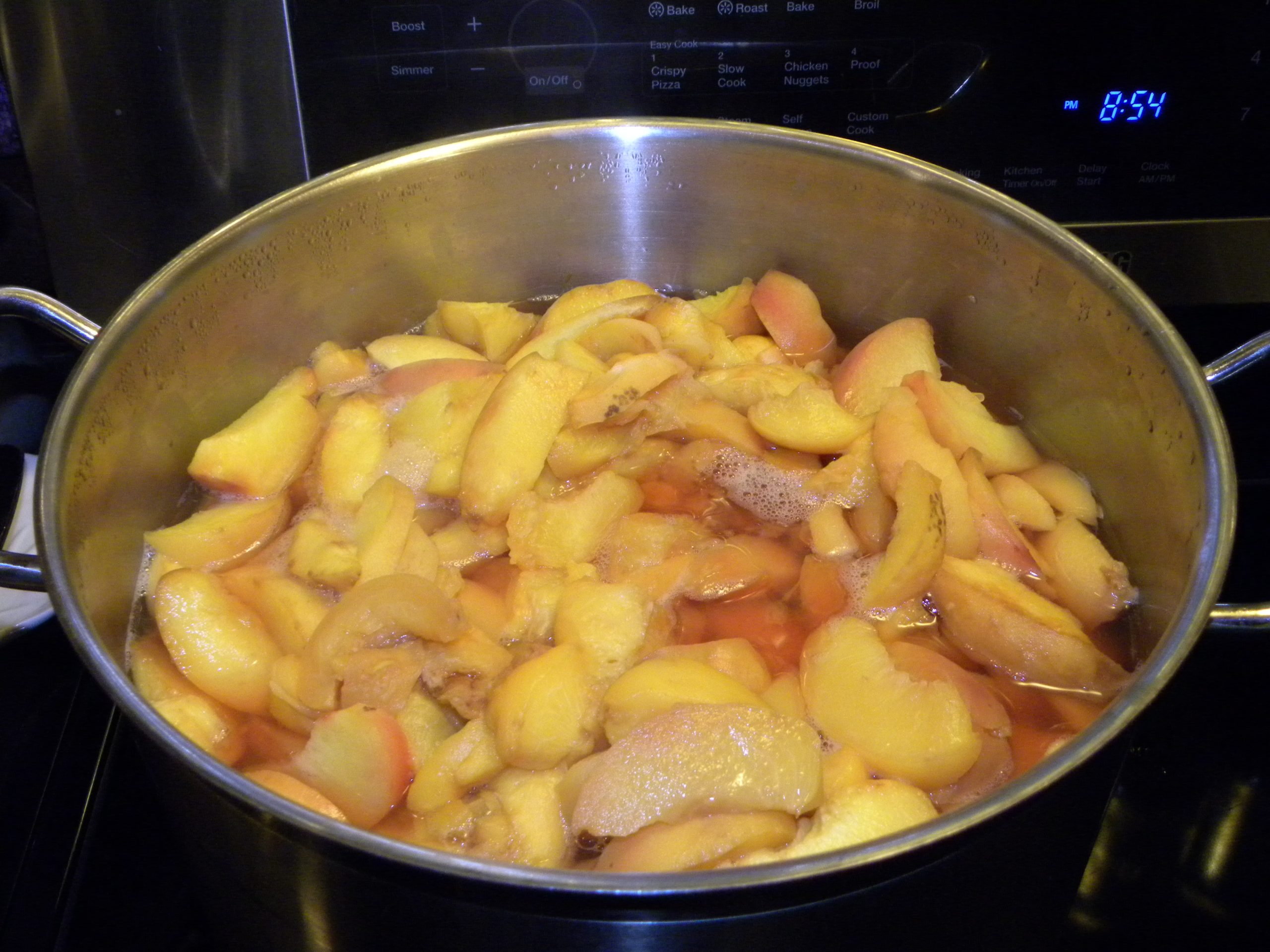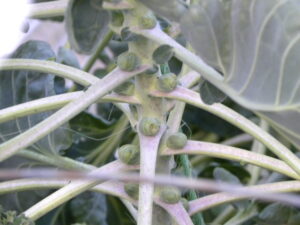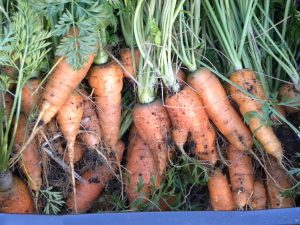
Carrot Harvest
The bulk of the food we store for winter we do so in cold storage, either in a cool room in the house or in our root cellar. Most of the work filling those spaces happens late in the season, so it is one of my last entries on food preservation methods despite how important it is to us.
The beauty of this ancient technique is that there is no electrical energy needed. No boiling water, no heating element, no freezer. Instead it uses the stable temperature of the ground and the colder times of year to extend the lives of veggies and fruits that already tend towards longevity after picking. For us, these are: garlic, potatoes, winter squash, pears, apples and roots (carrots, parsnips, beets).
What it does require from us, is choosing varieties that are known to keep well, appropriate spaces, and some care in how we handle and pack the produce. A cool room or closet in a house works great for some items. Others need a lower temp along with a moist environment like a root cellar provides. Basement root cellars can be made reasonably easily and cheaply and are right there in your house. We do not have a basement, so we had to do the slower, harder work of creating an outdoor root cellar.
In-Home Cool/Cold Storage
First, let me tell you about the foods we are able to preserve in our house. Because building our root cellar took years, even foods that I thought needed that real root cellar I went ahead and tried in the house. A number of these worked better than I expected. Plus, I (and the cats) can protect foods inside better from rodents – an important bonus!
Garlic – Garlic is harvested in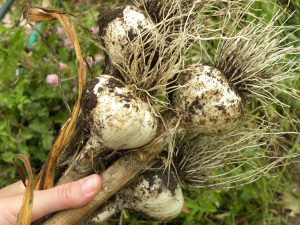 late July, then cured on our breezy porch until the leaves all die. I trim them up, weigh and label them, put them in paper bags and move them downstairs to a dark, somewhat cooler closet. I grow four different varieties of garlic and we eat them in the order of least long-lasting to most: Red Russian, Music, Phillips and NY Extra Hardy. They do not seem to be bothered by sitting in our non-air conditioned house through some heat in the late summer and fall, and the drier environment makes the house a better choice than the root cellar. With this system, we have garlic all the way into the next summer. By the time the NY Extra Hardy is starting to dry up or have brown spots, we are harvesting the next crop. We save our own garlic seed, too, so now are totally garlic independent! By the way, for a year’s supply of garlic to eat and seed garlic, I grow 120 heads.
late July, then cured on our breezy porch until the leaves all die. I trim them up, weigh and label them, put them in paper bags and move them downstairs to a dark, somewhat cooler closet. I grow four different varieties of garlic and we eat them in the order of least long-lasting to most: Red Russian, Music, Phillips and NY Extra Hardy. They do not seem to be bothered by sitting in our non-air conditioned house through some heat in the late summer and fall, and the drier environment makes the house a better choice than the root cellar. With this system, we have garlic all the way into the next summer. By the time the NY Extra Hardy is starting to dry up or have brown spots, we are harvesting the next crop. We save our own garlic seed, too, so now are totally garlic independent! By the way, for a year’s supply of garlic to eat and seed garlic, I grow 120 heads.
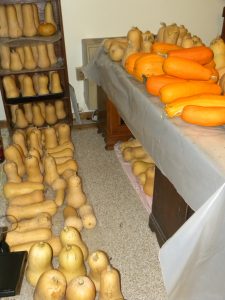
Winter Squash, Stored Indoors
Winter Squash – Over the years, we have settled on some favorite kinds of winter squash out of the wide number of choices: Butternut, Delicata, Long Pie, Seminole and Long Island cheese. Lots of nice, sweet flesh, a reasonable size and long storage are three criteria I have used. Again, some last longer than others, with the Seminole being the best keepers – I have 5 here from Fall 2019, an experiment in seeing how long they will last. We grow a lot of winter squash because we also feed it to our animals over the winter months, especially to keep goats on the milking stand. This year our total was 749.5#. Since they like warmer and drier conditions than our root cellar, we have a storage room set up that they dominate this time of year. Harvest generally runs from September through October, or until the first frost. Then we “cure” them in a hot, humid spot (for us, a greenhouse) for 2 weeks to harden their skin. After curing, they come in to the cooler set up we have for them. I can keep an eye on them, pulling any showing signs of spoilage first.
Potatoes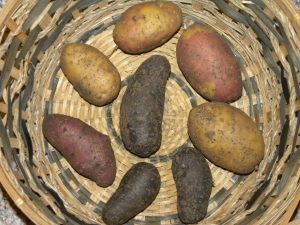
I was not a huge fan of potatoes until we started growing them ourselves and thus could choose from an amazing array of colors and textures! Purple Magic Molly, red Amarosa, red/yellow Pinto, Adirondack Reds and Blues, to name a very few of the myriad of options available as seed potatoes. Potatoes aren’t simple to grow, there are a variety of challenges. They are loved by other critters, especially potato beetles and voles, and they are very sensitive to drought or even inconsistent rains. They need to be hilled, then dug/forked up, which takes more human strength and soil disturbance than any other crop I grow. But, in a good year, it is worth it! We’ve had yields as high as 20 to 1 (for every pound I planted we harvested 20 pounds). We dig them a couple of weeks after the green tops have died, then I sort them, unwashed, into “will store” and “use soon” piles. The ones in good condition I lay out in trays on a shelf and floor of a dark downstairs closet then cover them with paper bags. I have read conflicting advice on how to cure potatoes (so, I don’t really), perfect storage temperature and humidity. So, I just keep trying slightly different systems and seeing what happens. I estimate that they are generally around 55F, which is a bit too warm, and 60% humidity, which seems about right. Laying them out on trays takes up a lot of room, but really helps me keep an eye and pull any that are rotting and use the ones threatening to sprout first.
Fruit
Pome fruits – especially pears and apples – can last for months in cold storage. In fact, most pears should ripen off the trees, but need the time inside to reach maturity.
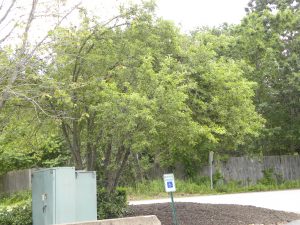
Old, Untended Apple Tree Between Parking Lot and Road
I have not planted apples here, since I don’t like them enough to deal with all the diseases and pests they have. We have put in 8 pear trees but they are not old enough to bear yet. However, we have great success gleaning both these crops. The apples we bring home from untended trees in public places are completely organic, but often are low quality in terms of taste and pest damage. Our goats, however, have yet to reject a single one! And there’s always enough good fruit for us to make
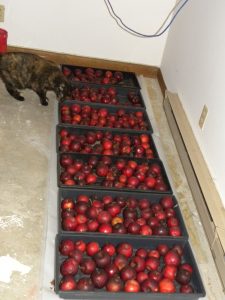
Bella Guarding Apples
a batch of applesauce and many apple pies. Usually I can pick up drops from August until November and we’ll all be eating them into January. They are in buckets and trays in our cool lower floor which is closer to 50F rather than the ideal temps of 36F otherwise we could keep them even longer.
Pears are intended for us humans, although we share them with the goats. Laying them out in trays around 50F gives me about a month when they can ripen. During that time we eat them, make nice pear dishes (here’s a great one we found, just substituted in wheat flour and maple syrup), and do at least one round of canning and/or dehydrating to stretch the season. November is a time when I can heat canning water on the wood stove and am glad for the extra heat and moisture from either method.
Root Cellar
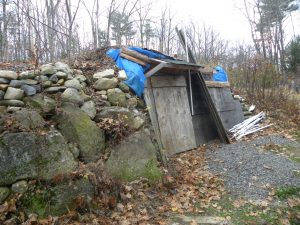
Our Root Cellar
When we bought a house without a true cellar (obviously we have a lower floor, but it is not situated under ground level), we knew we would have to put in extra work to achieve this sort of storage. There are many clever options for burying trash cans and coolers and even vehicles.
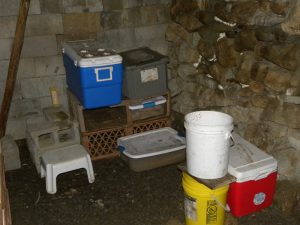
Inside the Root Cellar
But I wanted it to be convenient enough that we can actually use it, even as we get older. Having to dig snow and ice off and unbury it for access didn’t appeal to me. So, we hired a neighbor and his excavator to dig into the slope next to our house. Then, over the next few years, we took rocks from all over our property plus some concrete blocks we found and constructed the walls. A very robust roof was made, covered with a pool lining we found at the dump, and heaped over with soil. Perfecting the drainage, air flow and temperature regulation will continue, but it is working! It has never frozen, but we have some trouble keeping it cold enough. Again, we’ll keep learning about it as we live with it over time.
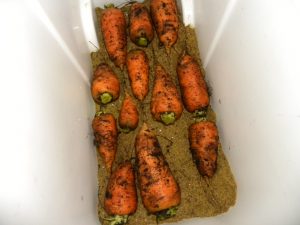
Packing Carrots for Storage
What we use it for is simple: roots! Carrots, beets, and parsnips so far. I make sure to pick varieties known for storage prowess, and need to time my planting so they are ready at the correct moment. Having carrots and beets ready to store in August isn’t helpful – the cellar isn’t cold enough and if I leave them in the ground, they might get too big and tough or be eaten up by voles.
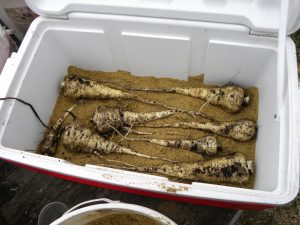 I will continue to try other kinds of roots now that we have it, such as parsley root, winter radishes, skirret, and salsify.
I will continue to try other kinds of roots now that we have it, such as parsley root, winter radishes, skirret, and salsify.
I pack the roots in damp clean sand for storage. You don’t want treated, salted sand offered free at your dump. Maybe you have sand around your home you can dig up, or you can buy clean sand from a gravel pit. If you end up with rotted veggies, you’ll need to dig out and no longer use the material around those, but we are otherwise reusing sand. We let it dry out in the sun over the summer to keep microorganisms in check.
They biggest challenge is protecting against rodents. Currently, I am using old coolers that I picked up from the dump or Good Will which have some extra insulation to moderate temperature changes and I hope are too tough for critters to gnaw through.
With this system, we were eating our own roots up until May last time around. This year we had more trouble with our crop (the drought hindered germination and growth, and we had a late season vole problem) so likely will have eaten most before that late in Spring 2021.
I am pleased to be having so much success and continuing to develop our capacity for cold storage, a low-electricity, time-honored way of greatly extending our harvests into the least productive time of year.


